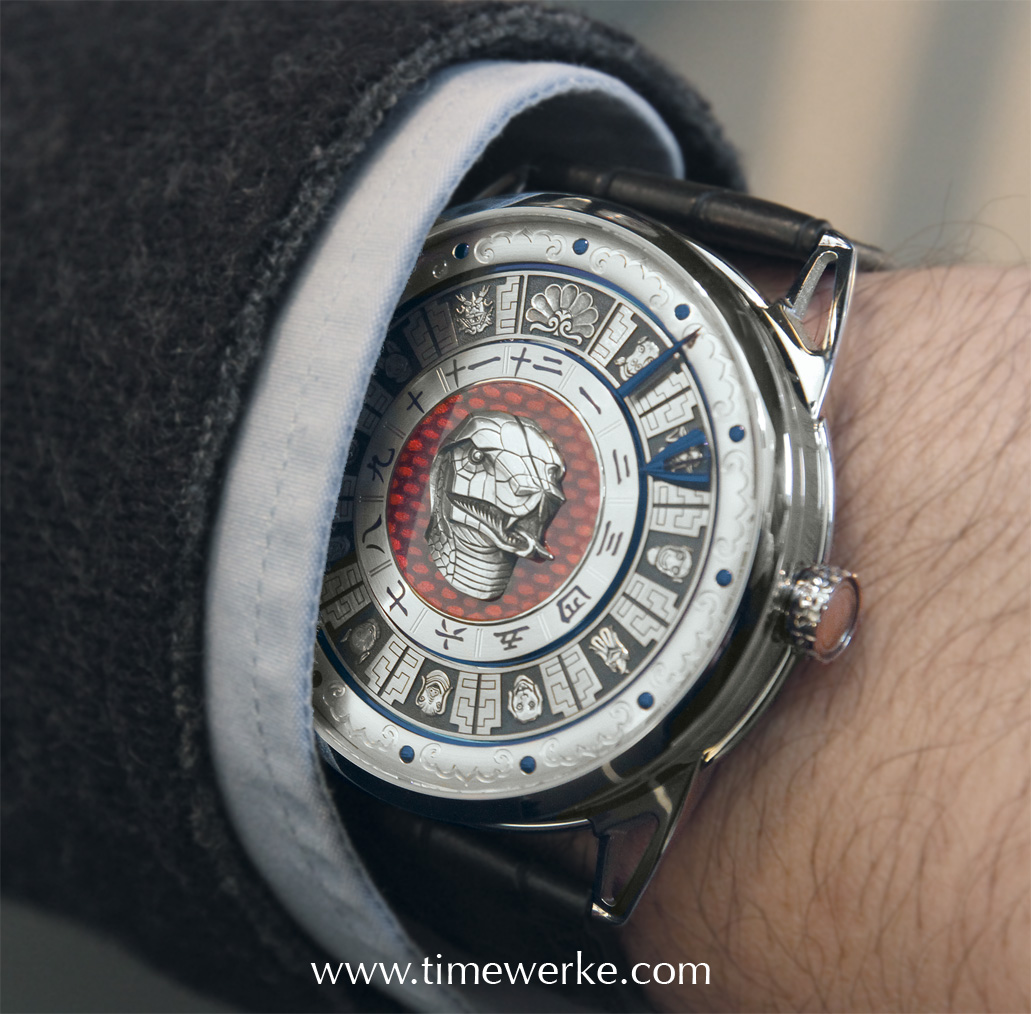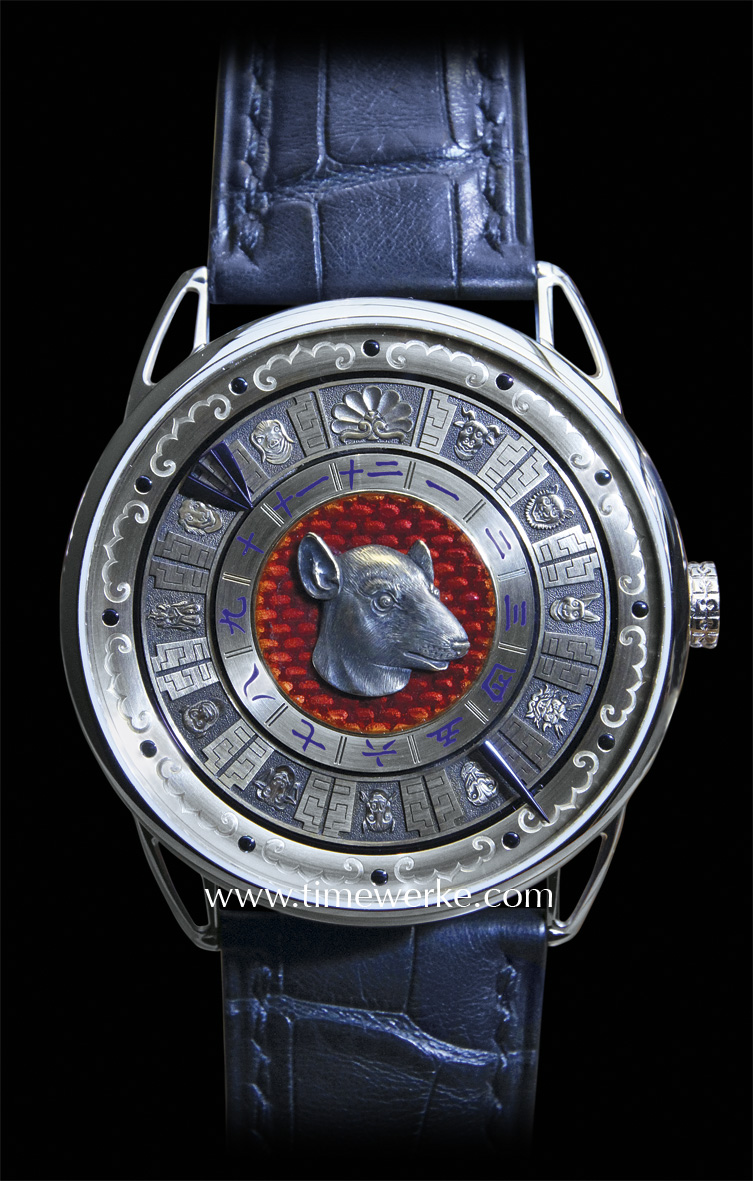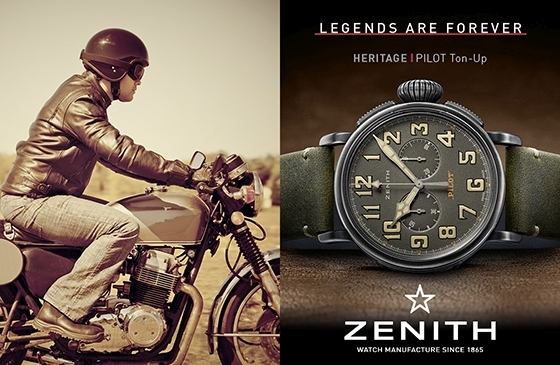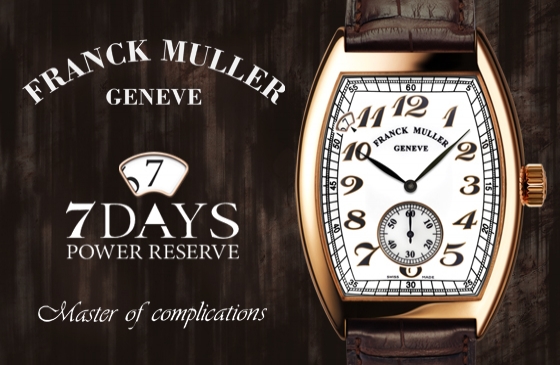
The De Bethune DB25 Imperial Fountain “Snake” on the wrist of Alessandro Zanetta, sales director of De Bethune, at the brand’s booth in Basel on 29 April 2013. The DB25 Imperial Fountain set includes all 12 zodiac heads and is priced at 1.5 million Swiss francs. Photo: © TANG Portfolio, at BaselWorld 2013
Following the recent return to China of two bronze heads of the Chinese zodiac, namely the rabbit and the rat, which were among the 12 looted from the Garden of Eternal Spring in yuanming yuan otherwise known as the Old Summer Palace more than 150 years ago, the whereabouts of five remain unknown.
It was during the time of the Qing Emperor Qianlong who reigned from 1735 to 1799 that the Old Summer Palace was built. The palace was constructed sometime between 1749 and 1757 and was said to be based on the designs of Giuseppe Castiglione who was a Jesuit.
At the Old Summer Palace’s Garden of Eternal Spring, an elaborate water clock fountain using the 12 signs of the Chinese zodiac to tell time was created. These Chinese zodiac animals made for the haiyantang water clock fountain featured bronze animal heads on human-shaped bodies.
The Western-designed bronze sculptures were made by Chinese bronze makers. It seems that time was told by observing which animal heads from this hydraulic water clock had water spouting out from their mouths.
In 1860 during the Second Opium War, the Old Summer Palace was burnt by French and British forces and ransacked; among the loot were the 12 Chinese zodiac bronze heads from the water clock fountain.
It was only in recent years that seven of these bronze animal heads, including the recent two, have made their way back home to China thanks to the China Poly Group and wealthy, generous donors like Dr Stanley Ho and François-Henri Pinault.
The five missing bronze heads are the dragon, snake, sheep, rooster and dog.
In 2012, independent watch Manufacture De Bethune hinted that it was creating a dial engraved with a snake’s head inspired by the bronze animal zodiac heads of the water clock fountain of the Old Summer Palace which is located in Beijing.
In January 2013, Alessandro Zanetta, sales director of De Bethune, provided the update that this snake head was still being fine-tuned and would only be revealed in April at Basel.
Releasing an engraved snake head dial was not only appropriate but sufficient since 2013 is the year of the snake. However, in April 2013 at the annual BaselWorld watch fair, De Bethune decided to go all the way by releasing and showcasing all 12 different animal heads of the Chinese zodiac with looks based on the actual ones from the Old Summer Palace.

The De Bethune DB25 Imperial Fountain “Rat”. Click on the image for a better view. © TANG Portfolio, at BaselWorld 2013
Known as the De Bethune DB25 Imperial Fountain collection, the mesmerizing and detailed engravings of the animal heads created through the bas relief technique are the works of Michèle Rothen. The animal sculptures on the dial are made of gold and not bronze which was used in the original water fountain.
Note the detailing work, especially on the De Bethune Imperial Fountain “Rat” and “Rabbit” and compare these to the actual bronze heads returned to China and you’d immediately see the fine attention to details.
The De Bethune DB25 Imperial Fountain is the continuation of the excellent artistic dials first seen on the ninth Mayan Underworld from 2012 which has since been sold out.
One must also remember that De Bethune is known as a dynamic movement maker. With the animal engraving on an enamel base at the centre of the dial, Denis Flageollet and the good folks at De Bethune came up with the peripheral hour and minute hands so as not to obstruct the artwork.
This explains the new calibre DB 2145 manual-winding movement with six days of power reserve.
The idea for recreating the bronze heads from the water clock fountain came from Michael Tay, executive director of The Hour Glass, who sensed great potential for such a collection following the huge success of the ninth Mayan Underworld.
After discussions with the innovative brand, the Imperial Fountain then became a joint collaboration between De Bethune and The Hour Glass.
Four sets, each comprising 12 animal zodiac timepieces, have been offered with each set priced at 1.5 million Swiss francs. An additional 40 Imperial Fountain timepieces will also be made, each offered individually.
Therefore, there will be a total of 88 pieces for this fantastic limited edition series.
The cost of one set is still nowhere near the current price for one original bronze head. For example, the horse head went under the hammer in 2007 for US$8.84 million.
In 2009, a Chinese collector had won the bids for the rabbit and rat bronze heads for US$18 million each at a Christie’s auction but the deal fell through. [The two bronze heads were eventually obtained by François-Henri Pinault who donated these back to China in June 2013.]
Owners of the De Bethune DB25 Imperial Fountain set will have no worries over missing pieces as they will get to enjoy all the 12 zodiac animals.
Other related articles on De Bethune which might be of interest:
i. Good fortune ahead
ii. De Bethune



